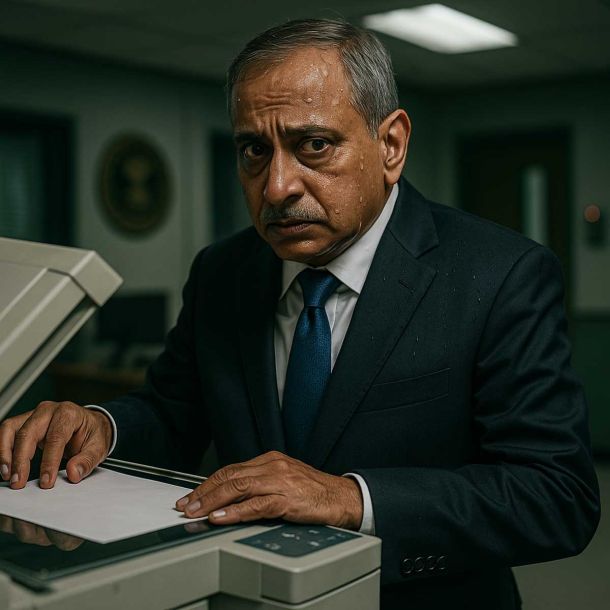More Coverage
Twitter Coverage
Satyaagrah
Written on
Satyaagrah
Written on
Satyaagrah
Written on
Satyaagrah
Written on
Satyaagrah
Written on
Join Satyaagrah Social Media
On 16th Aug 1946, during Ramzan's 18th day, Direct Action Day aimed to provoke Muslims by mirroring Prophet Muhammad's victory at Badr, Gopal 'Patha', the Lion of Bengal, heroically saved Bengali Hindus & Calcutta from a planned genocide, altering history
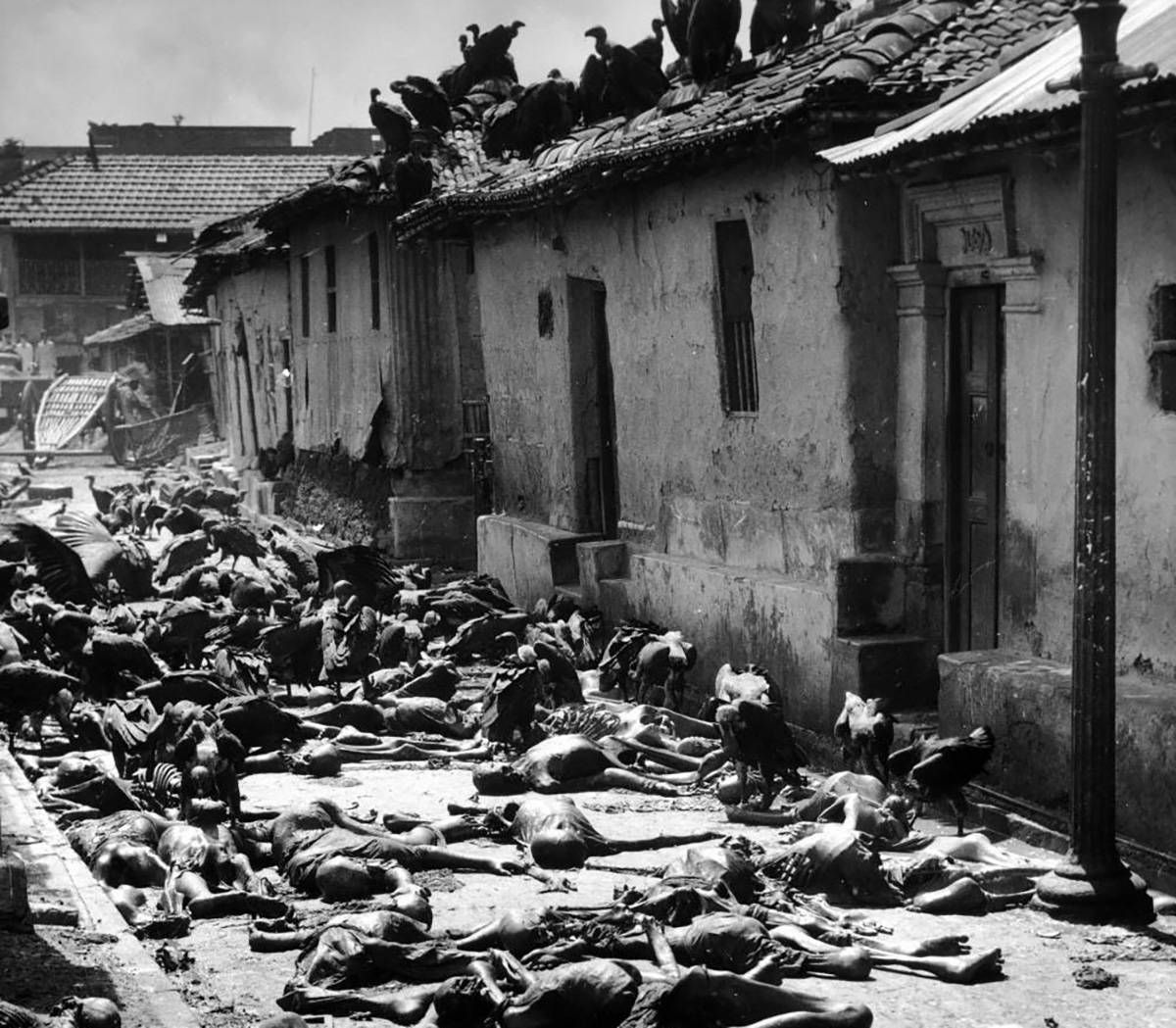
On 16th August 1946, Kolkata (then Calcutta) experienced its most violent convulsions. The infamous ‘week of long knives’ – an unprecedented orgy of loot, murder, rapes and molestation let loose on the city’s unsuspecting Hindus by Muslim League strongmen and goons that left 7,000 people dead, tens of thousands maimed and an estimated 1.2 lakh homeless – started with the call for ‘direct action day’ by League supremo Muhammad Ali Jinnah.
Very few know Gopal Chandra Mukhopadhyay, the braveheart who turned the tide against the Muslim League, saving tens of thousands of Hindus from certain annihilation and thus defeating the League’s diabolic pogrom against Hindus. Had it not been for him and his courageous and patriotic band of followers, Calcutta and its neighbouring Hindu-majority districts would have been drained of Hindus and made part of East Pakistan.
18 August ought to be a red-letter day for Kolkata in particular, and Bengal in general. But few remember this day, which marked a turning point in the gory events that overtook the city from 16 August 1946. And it was the dramatic turn of events from 18 August that year that saved the city and Bengal from becoming part of Pakistan.
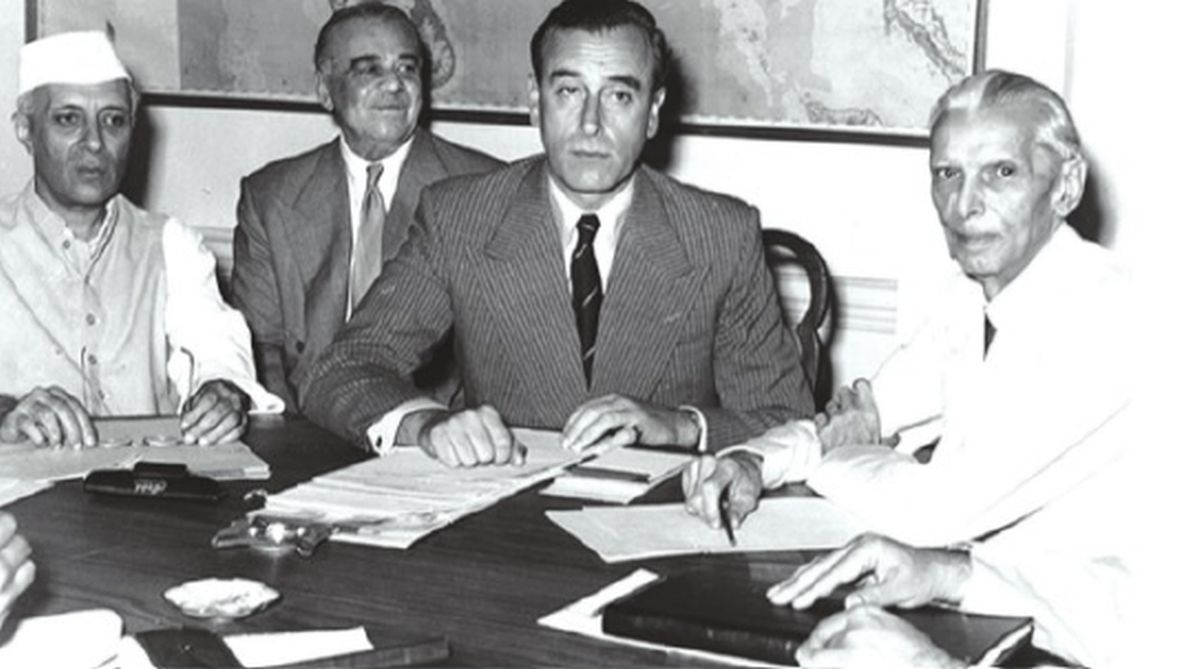 |
Background
In 1946, the Cabinet Mission was sent to India by the British government to find a resolution to the conflict between the Indian National Congress (INC) and the Muslim League on the issue of independence. The two parties were the largest in India’s Constituent Assembly.
The League wanted a separate homeland for the Muslims they called 'Pakistan' while the INC wanted a united India. After several rounds, Cabinet mission’s plan of this division of power was accepted by both the parties, but the Muslim League did not trust the Congress.
On 10th July, 1946, the then Congress president Jawaharlal Nehru, had declared in Bombay (now Mumbai) via a press conference that it might change and modify the Cabinet Mission Plan according to the then situation and agreed to participate in the Constituent Assembly. This action of Nehru infuriated Jinnah and the Muslim League refused to participate in the Constituent Assembly as they feared that their demands would be undermined. This caused Jinnah to adopt a more rigid stance for ‘Independent and sovereign’ separate Muslim majority land dividing India.
“Either a divided India or a destroyed India” were the bloodcurdling words uttered by the leader of the All India Muslim League, Muhammad Ali Jinnah, the words that sent chills down the spine.
The Muslim League Council proclaimed 16th August 1946 as ‘Direct Action Day’ in order to accentuate their demand for a separate Muslim homeland after the British left the Indian subcontinent. Their main aim was to attain a different country with a Muslim majority.
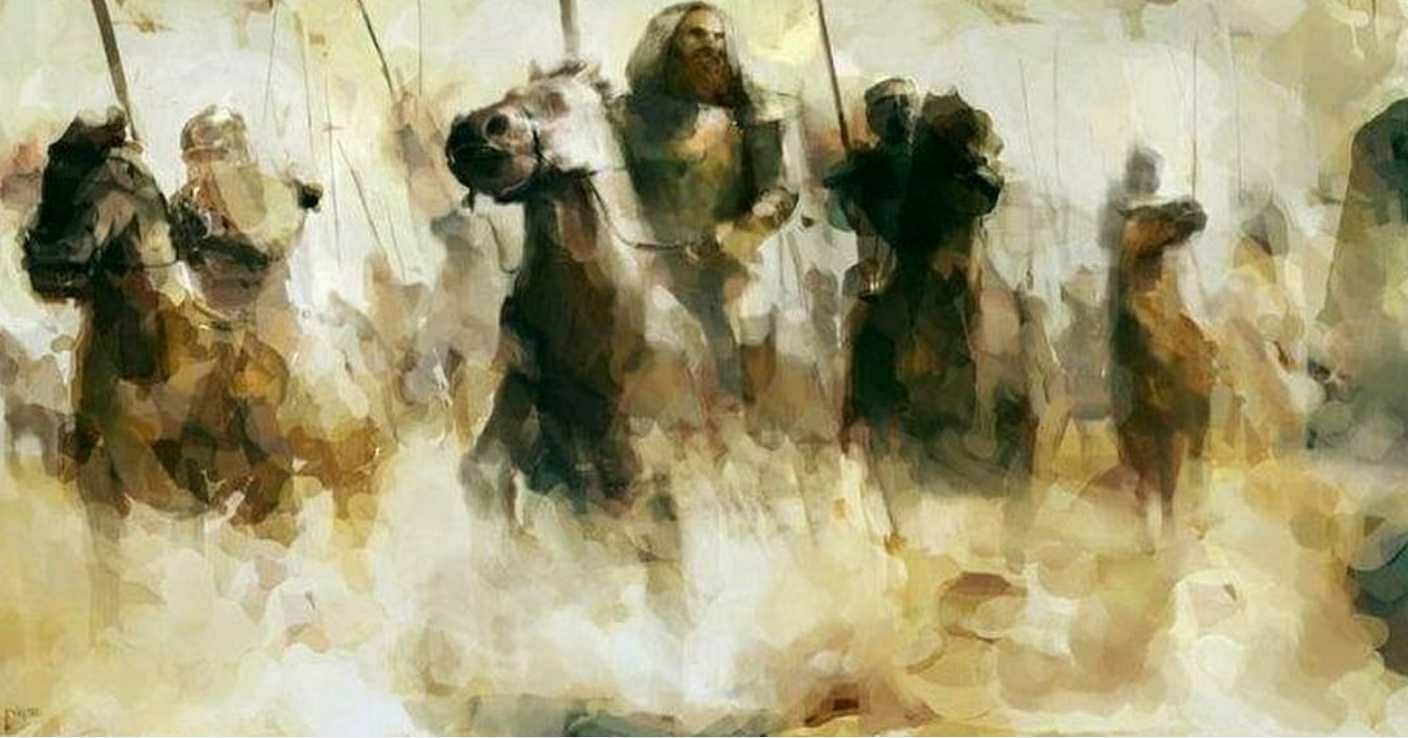 Battle of Badr |
The Islamist Connection
Jinnah declared that he was going to “create trouble” and pledged “I will have India divided or India burned”. He gave a call for ‘Direct Action Day’ on 16 August 1946, where Muslims would observe a hartal (general strike) to demonstrate to the British their resolve for the creation of Pakistan.
The day - 16th August - was chosen deliberately with utmost care to provoke Islamist sentiments. That day in 1946 was the eighteenth day of Ramzan, and it was on that day that Prophet Muhammad waged the bloody Battle of Badr which resulted in his first decisive victory over the heathens and the subsequent conquest of Mecca. Islamists celebrate the victory in this battle as a decisive one for Islam.
The then Muslim League chief minister of Bengal, Huseyn Shaheed Suhrawardy, organised a pogrom against the Hindus of Calcutta from 16 August 1946 – the Muslim League’s Direct Action Day. The pogrom against Hindus by the Muslim League was pre-planned and that the League had bidden “goodbye to Constitutional methods” and would “create trouble”.
Mr. Liaquat Ali Khan told the Associated Press of America that Direct Action meant “resorting to non-constitutional methods, and that can take any form and whatever form may suit the conditions under which we live.” He added, “We cannot eliminate any method. Direct Action means any action against the law.” Sardar Abdul Rab Nishtar was reported to have said that Pakistan could only be achieved by shedding blood and, if opportunity arose, the blood of non-Muslims must be shed, for” Muslims are no believers in ahimsa.”
Suhrawardy was, according to all accounts, a bully who believed in violence and had a large army of goons at his disposal to enforce his writ. He was highly corrupt and lacked administrative skills. Also, he had a visceral hatred for Hindus who, he believed, were heathens who had to be killed or converted to Islam. Suhrawardy’s personal diaries reveal he was an Islamist hardliner who believed in making the entire Indian sub-continent an Islamic state.
Posters of Jinnah posing with a sword were distributed in Calcutta which said:-
“The sword of Islam must be shining on the heavens and will subdue all evil designs… We Muslims have had the Crown and have ruled. Do not lose heart. Be ready and take your swords. Think you, Muslims, why we are under the kafirs today. The result of loving the kafirs is not good. O kafir! Do not be proud and happy. Your doom is not far and the general massacre will come. We shall show our glory with swords in hands and will have a special victory.”
Another leaflet asked Muslims to come into the arena with their swords and change their tactics. “We shall then see who will play with us, for rivers of blood will flow. We shall have the swords in our hands and noise of takbir. Tomorrow will be the doom’s day.”
Suhrawardy and his Muslim League colleagues delivered fiery speeches reminding Muslims of Bengal of the victory of Badr and exhorting on them to follow in the footsteps of the Prophet and wrest a victory for Islam on 16 August. Syed Muhammad Usman, then mayor of Calcutta, issued a widely circulated leaflet that said: Kafer! Toder dhongsher aar deri nei! Sarbik hotyakando ghotbei! (Infidels! Your end is not far away! You will be massacred!)
Devendra Panigrahi, in his seminal India’s Partition: The Story of Imperialism in Retreat, quotes the 13 August 1946 issue of Muslim league mouthpiece The Star of India, which gave detailed instructions on how to observe ‘Direct Action Day’. The newspaper wrote:
Muslims must remember that it was in Ramzan that permission for jehad was granted by Allah. It was in Ramzan that the Battle of Badr, the first open conflict between Islam and heathens, was fought and won by 313 Muslims and again it was in Ramzan that 10,000 Muslims under the Holy Prophet conquered Mecca and established the Kingdom of Heaven and the commonwealth of Islam in Arabia. The Muslim League is fortunate that it is starting its action on this Holy month and day.
Muslim League leaders instructed clerics in mosques to give fiery speeches after the jumma namaz (16 August was a Friday as well). The clerics obeyed and reminded their congregations that the day was a significant one and exhorted them to cleanse Bengal of kafirs or infidels. But even before the Friday prayers, Muslims started attacking Hindu shops and business establishments that had remained open in defiance of the Muslim League’s call for a hartal (strike). After the prayers, tens of thousands of agitated Muslims streamed to the Ochterlony monument (the Shahid Minar now) to hear Suhrawardy and other Muslim League leaders. The leaders issued fiery speeches urging the Muslims to attack Hindus and drive them away from Calcutta so that Jinnah’s dream of making Bengal a part of Pakistan could come true. Suhrawardy, in his speech, assured the Muslims that he had ensured that the police and army would be “restrained”. This was construed as a direct encouragement to Muslims to attack and kill Hindus.
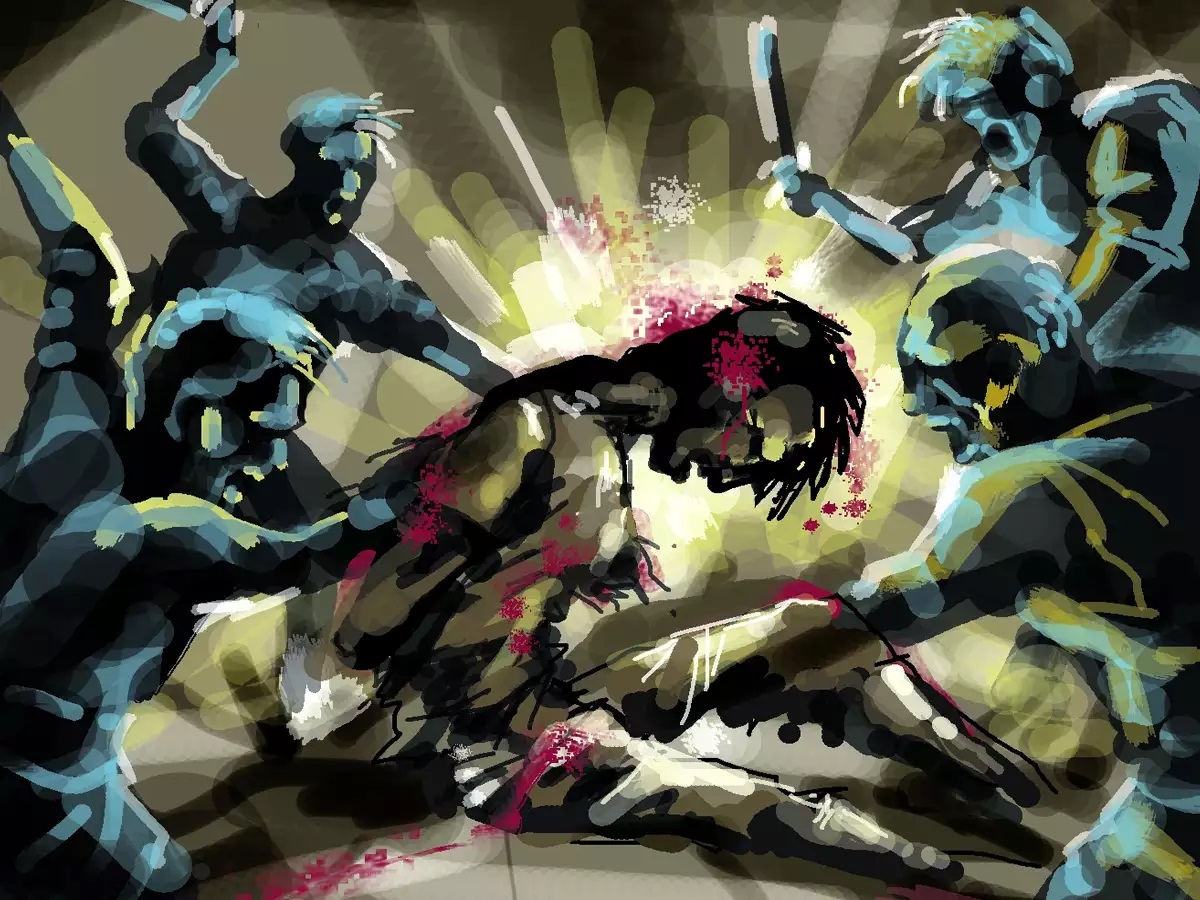 Representative image |
Call for Total Annihilation of Hindus (Secret Circular Issued Among Muslims)
- All Muslims of India should die for Pakistan
- With Pakistan established whole of India should be conquered
- All people of India should be converted to Islam
- All Muslim kingdoms should join hands with the Anglo-American exploitation of the whole world
- One Muslim should get the right of five Hindus, i.e. each Muslim is equal to five Hindus
- Until Pakistan and Indian Empire is established, the following steps should be taken:
- All factories and shops owned by Hindus should be burnt, destroyed, looted and loot should be given to League Office
- All Muslim Leaguers should carry weapons in defiance of order
- All nationalist Muslims if they do not join Leaguers must be killed by secret Gestapo
- Hindus should be murdered gradually and their population should be reduced
- All temples should be destroyed
- Muslim Leagues spies in every village and district of India
- Congress Leaders should be murdered, one in one month by secret method
- Congress upper offices should be destroyed by secret Muslim Gestapo, single person doing the job
- Karachi, Bombay, Calcutta, Madras, Goa, Vizagapatam should be paralyzed by December 1946 by Muslim League volunteers
- Muslim should never be allowed to work under Hindus in Army, Navy, Government services or private firms
- Muslim should sabotage whole of India and Congress Government for the final invasion of India by Muslims
- Financial resources are given by Muslim League. Invasion of India by Nizam communist, few Europeans, Khoja by Bhopal, few Anglo-Indians, few Parsis, few Christians, Punjab, Sind and Bengal will be places of manufacture of all arms, weapons for Muslim Leaguers invasion and establishing of Muslim Empire of India
- All arms, weapons, should be distributed to Bombay, Calcutta, Delhi, Madras, Bangalore, Lahore, Karachi, branches of Muslim League.
- All section of Muslim League should carry minimum equipment of weapons, at least pocket knife at all times to destroy Hindus and drive all Hindus out of India
- All transport should be used for battle against Hindus
- Hindu women and girls should be raped, kidnapped and converted into Muslims from October 18, 1946
- Hindu culture should be destroyed
- All Leaguers should try to be cruel at all times to Hindus and boycott them socially, economically and in many other ways
- No Muslim should buy from Hindu dealers. All Hindu produced films should be boycotted. All Muslim Leaguers should obey these instructions and bring into action by September 15, 1946.
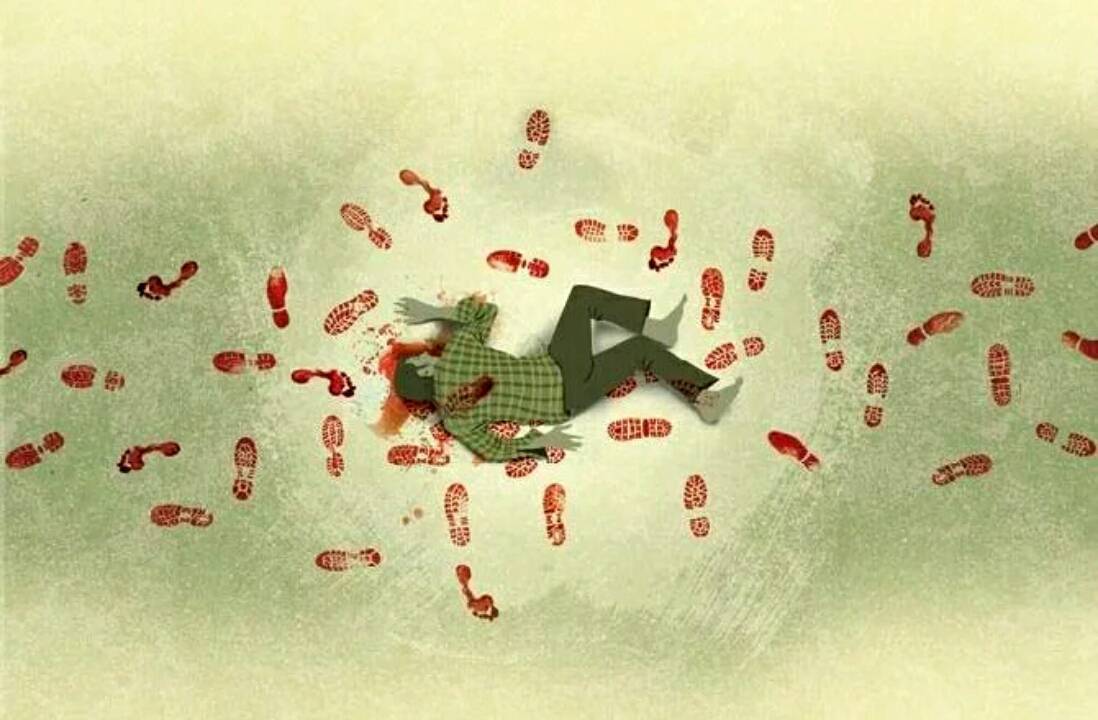 |
An organized massacre Against Hindus
On 16th August, 1946 the gathering, estimated variously between 60,000 and 200,000, was by far the largest assembly of Muslim congregation of the then Capital of Undivided Bengal.
Muslim League leader Khwaja Nizamuddin (who later became governor general of Pakistan after Jinnah’s death) was one of the first to address the rally. He laid the ground by alleging that Hindus had attacked Muslims that morning and the Muslims had only retaliated in self-defence. Suhrawardy delivered a fiery speech calling for the creation of Pakistan and urging Muslims to fight for it. He gave the slogans: “Maar ke lenge Pakistan, lad ke lenge Pakistan, le kar rahenge Pakistan, Allahu Akhbar, nara-i-takhbir”. (We will kill and fight to create Pakistan, we are determined to create Pakistan.)
Suhrawardy, according to reports filed by British intelligence operatives after the rally, told the large and agitated crowd that he had ensured the police and army would not intervene. That was seen as an open call and encouragement to the goons to attack Hindus. Even Banglapedia, the ‘National Encyclopedia of Bangladesh’ (where Suhrawardy is a revered figure), writes that Suhrawardy had told the gathering that the police and the army had been “restrained”. That meant they would not look the other way and would not interfere when Muslim mobs attacked and killed and raped Hindus.
Agitated Muslims, baying for the blood of Hindus, streamed out of the rally and spread to different parts of the city armed with iron rods, swords and lethal weapons. A shop selling arms and ammunition belonging to a Hindu at Esplanade (just near the venue of the Muslim League rally) was the first to be attacked. The owner and his employees were decapitated. What followed was a one-sided orgy of violence in which thousands of Hindu homes and shops were attacked, Hindu men and boys brutally massacred (decapitation and amputation of limbs were the preferred forms of brutality) while Hindu women were disrobed, raped and killed. Many were taken away as sex slaves.
One of the worst massacres took place at Kesoram Cotton Mills at Lichubagan in the Muslim-dominated Metiabruz area, where a Muslim League leader, Syed Abdullah Farooqi, led a Muslim mob inside the compound of the mill where about 600 Hindu labourers, mostly Odias, were staying. They were all beheaded; just two survivors lived to tell the tale of Muslim brutality. Both had their arms hacked off and had been given up for dead, but they survived.
The Hindus, as Suhrawardy had rightly predicted, did not put up any resistance in the first two days. He had told his colleagues that Hindus had been numbed into submission by centuries of Muslim rule and just did not possess the courage to stand up to Muslims, even though Muslims were in a minority in the country. It must be remembered that Calcutta had 64 per cent Hindus and 33 per cent Muslims in 1946, and only a few districts neighbouring Calcutta like Howrah and Hooghly were Hindu-majority. Suhrawardy told his Muslim League colleagues that after centuries of being dominated by Muslims, Hindus did not “have it in their genes to resist Muslims” and that “Hindus were of the firm belief that they (Hindus) were weak and Muslims were strong and ferocious”.
Suhrawardy stationed himself in the control room of the Calcutta Police headquarters at Lalbazar, from where he restrained the British and Anglo-Indian police officers from deploying forces to areas where Muslims were attacking Hindus successfully. Earlier, Suhrawardy had changed the composition of the city police’s constabulary by inducting a large number of Pathans and Muslims from United Provinces (now Uttar Pradesh) into the force to replace Bihari Hindus. These Muslim constables also aided the Muslim League criminals in killing Hindu men and raping and butchering Hindu women.
The killings took place in Hindu-majority areas of the city, and in the first two days – 16, 17 August – a few thousand Hindus were killed. Estimates vary between 4,000 and 20,000; about 3,500 bodies of Hindus were cremated, but British and Indian contemporary historians have written that many times that number were stuffed into underground sewers or simply dumped in the Ganges and the various canals that criss-crossed the city. A conservative estimate would put the number of Hindus killed or missing at over 7,000.
Hindus started fleeing Calcutta. Howrah station was a mass of humanity with Hindus desperate to board trains bound for other parts of the country. Hundreds of Hindu families, desperate to cross the Hooghly in country boats, were drowned when Muslims manning barges rammed their vessels into the country boats. This was exactly what Suhrawardy had planned: kill Hindus and create such a fear psychosis that Hindus would flee Calcutta, and the city would then become Muslim-majority. A Muslim-majority Calcutta would then bolster the Muslim League’s demand for its inclusion in Pakistan.
Suhrawardy had planned that after driving Hindus out of Calcutta, he would turn his attention to Hindu-majority districts of Howrah and Hooghly as well as the 24 Parganas that were industrialised and driving the economy of Bengal. Without these districts, he realised, East Pakistan would not be economically well off. So it was imperative to drive Hindus away from these districts or beat them into submission so that they would not oppose the League’s demand for the inclusion of the districts in Pakistan.
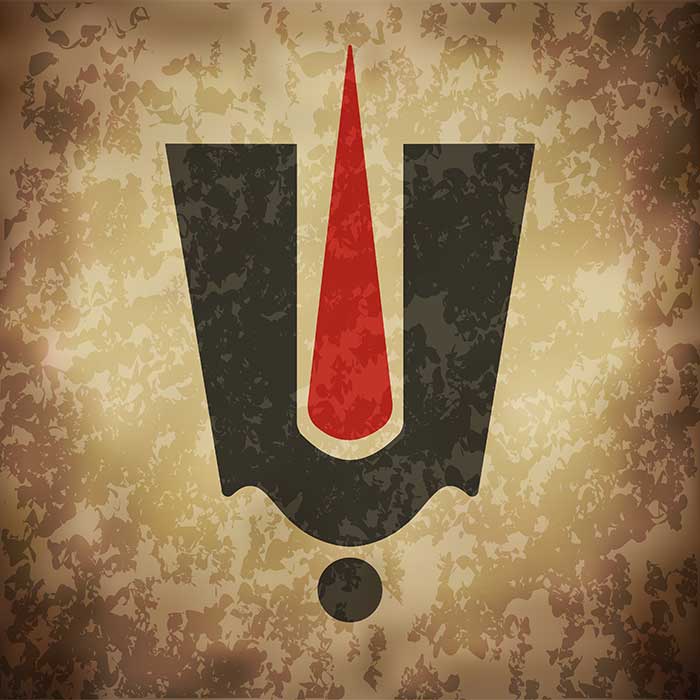 |
Enter Gopal Mukhopadhyay (Gopal Patha’s Retaliation Saved Millions Of Hindus, Brought Islamist Muslim League To Its Knees)
It was at this crucial juncture, when Suhrawardy’s and the Muslim League’s diabolical plan of killing Hindus and reducing them to a hopeless minority in Calcutta and neighbouring districts was coming to fruition, that Gopal Chandra Mukhopadhyay emerged on the scene. Gopal, then 33, belonged to a family of nationalists, born in a Bengali Hindu Brahmin family living at Malanga Lane in the Bowbazar area of Kolkata.. He was an ardent supporter of Netaji Subhas Chandra Bose and used to abhor Gandhian non-violence. He was a nephew of Anukul Chandra Mukhopadhyay, a nationalist thinker and professor of philosophy at Allahabad University who was awarded the Padma Bhushan in 1964.
Gopal used to run his family mutton shop and, hence, was popularly known as Gopal ‘patha’ (‘patha’ means male goats in Bengali). Many researchers have said he used to interact closely with Muslim traders and rearers of goats, and bore not an iota of ill will towards Muslims. From his early days, Gopal was a philanthropist, helping families and people in distress. Gopal had already raised the Bharat Jatiya Bahini, a nationalist organisation comprising young men, to help people in distress and carry out relief works during calamities. Many members of the Bahini were wrestlers.
On the night of 17 August, when distressing reports of large-scale massacre of Hindus and rape of Hindu women started reaching Gopal, he called out to Hindu youths and members of his Bharat Jatiya Bahini to resist the attacks by Muslims. He told his men to pay back the Islamist terrorists who come to attack Hindus in their own coin. Throughout the night, Gopal and his associates chalked out detailed action plans to stop Muslim attacks on Hindus. Hearing of the self-defence strategy being chalked out by Gopal, many non-Bengali Hindu youths from Bihar and UP also joined him. Marwari traders of Burrabazar, who had also borne the brunt of Muslim attacks, offered financial help. Hindu blacksmiths worked overnight in their workshops to make thousands of swords, spears, choppers, cleavers and other weapons free of cost.
Marwari businessmen had earlier for precaution bought some pistols, cartridges, and grenades from American soldiers stationed in Calcutta after the second World War, which was given to Gopal. Gopal was a unifying force who attracted even common people like milkmen, vegetable sellers, laborers, and others to join the movement to fight back Islamist terrorism.
Gopal knew that it was very critical to decisively strike back the Islamists if Hindus were to survive in Calcutta, if he failed to rise to the occasion Calcutta would become Muslim majority and eventually become Pakistan by a complete ethnic cleansing of Hindus.
He therefore made robust and meticulous plan and told his boys if the Muslims kill one Hindu, they should kill 10 Muslims as there is no other way they would be able to win this disproportionate battle. The Muslim League had lakhs of Muslims at their disposal to fight for jihad, while the Hindu community had only one Gopal Patha with his band of boys. But unlike the unscrupulous Muslim leadership, Gopal asked his men to respect Muslim women and not indulge in despicable tactics of kidnapping and raping women like the Islamist terrorists.
 |
Gopal’s Counter-Attack
By early morning of 18 August, small armies of Hindu youths were ready in Hindu localities to take on Muslim attackers. Suhrawardy and his Muslim League colleagues knew nothing of this build-up of Hindu resistance and started directing League criminals to Hindu areas from that morning again. Suhrawardy told his Muslim League colleagues and workers that they had two more days to cleanse Calcutta of Hindus as pressure was building up due to news of the killings reaching Delhi. Suhrawardy apprehended intervention by the viceroy, and hence his priority was to step up the killings of Hindus in Calcutta on 18 August and then turn his criminals loose in the three neighbouring districts over the next two days to complete his evil plan.
But the Islamist goons and criminals received a nasty shock on 18 August morning. “They faced resistance everywhere. Hindu youths counter-attacked with such ferocity that the Muslim League men had to flee. Many were killed. Emboldened by their success in taking on and defeating their Islamist attackers, Hindu youths took the fight to Muslim-majority areas and started killing Islamist men. They did not, however, touch Muslim women and children or the aged and the infirm,” writes historian Sandip Bandopadhyay, who researched Gopal Mukhopadhyay extensively. “Gopal was never communal. He simply organised self-defence of Hindus by organising Hindu youths to fight back Islamist aggression. He gave shelter to the homeless and widows and stopped them from getting killed or converted,” writes Bandopadhyay.
After defending the Hindu colonies very successfully, the Hindu youths took the fight to Muslim majority colonies and started killing the Islamist criminals. Historian Sandip Bandhopadhyay mentions that the Hindu youths did not harm old, infirm, children and women in the Muslim areas.
Over the next three days – 18-20 August – Muslim League goons were paid back in their own coin. All Muslim League goons who had led mobs in attacking Hindus and those who had participated in the pogrom against Hindus were identified, hunted down and killed. Panic spread among Muslims, who felt they were no longer safe in Calcutta. From 19 August, the tide had turned and Islamist men and youth who had killed Hindus were at the receiving end. Suhrawardy and his men, as well as the biased and anti-Hindu Calcutta Police officers and constabulary, could do nothing to stop Hindu resistance.
The Hindu fightback was led by Gopal Mukhopadhyay and some men like Basanta, a famous wrestler of Beadon Street (near Gopal’s residence in Bowbazar), but it was the Dalits and non-Bengali Hindus from Bihar and United Provinces who provided the muscle. Financed by Marwari traders, they fought back valiantly and succeeded in reversing the tide in favour of Hindus. By counter-attacking Islamists, they not only shattered the illusion among Islamists that Hindus were meek but also drove fear into the hearts of the Islamists who were confident of annihilating the Hindus.
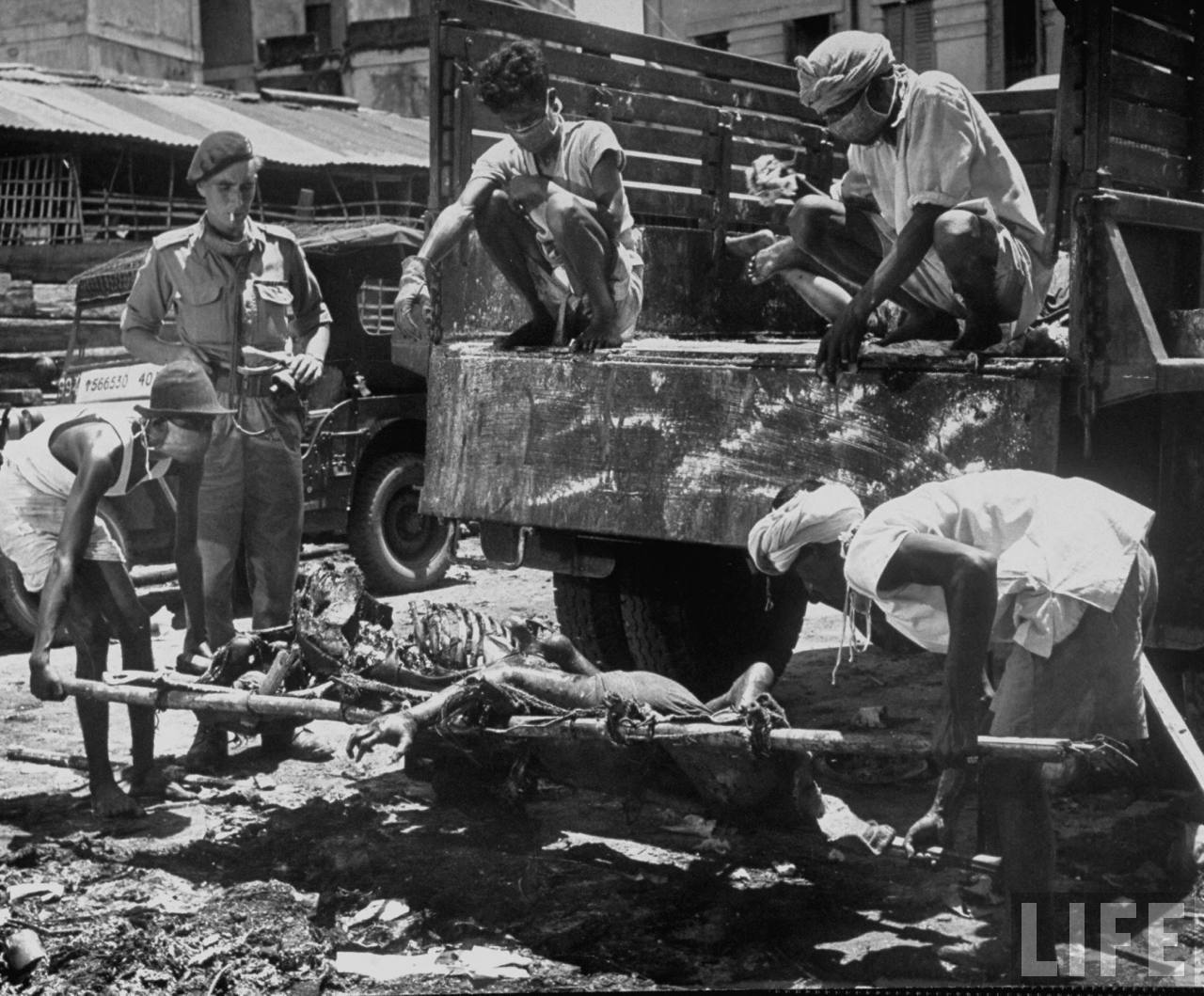 |
Setback to Suhrawardy
Suhrawardy, who had thought Hindus were cowards and would submit meekly to Islamist attacks and subsequent domination, received a deep shock. He was shattered and, according to a British police officer, was seen in Lalbazar in the evening of 19 August in a state of utter shock, his head in his hands and muttering he could never imagine the Hindus would fight back and kill Muslims.
Suhrawardy’s sinister plan to kills Hindus in Calcutta and the neighbouring districts in order to create panic among the Hindus and trigger an exodus from these areas, thus converting them into Muslim-majority areas that would be ripe for inclusion in East Pakistan, received a huge setback. Suhrawardy was a defeated man, thanks mainly to Gopal Mukhopadhyay. His plan lay in tatters. By 21 August, when viceroy’s rule was imposed in Bengal, Suhrawardy was dismissed, and the British and Gurkha army troops spread out all over Calcutta to put an end to the killings, more Muslims than Hindus had been killed.
Suhrawardy, in order to save his chair and put an end to the violence, deputed G G Ajmeri and Mujibur Rahman (later the creator of Bangladesh) who were musclemen and members of the Muslim League students’ wing and the Muslim National Guard, to seek truce with Gopal Mukhopadhyay. They went to Mukhopadhyay and pleaded for an end to the killings. Mukhopadhyay agreed on the condition that the Muslim League would disarm its killing squads and stop attacks on Hindus first. Suhrawardy complied.
Historians say Suhrawardy was not only driven to the wall by Hindu resistance and the consequent failure of his diabolical plans, he also sensed that the British viceroy Lord Archibald Wavell was at the edge of his patience and could dismiss Suhrawardy’s Muslim league government in Bengal. That would have been more disastrous for Suhrawardy and he would have lost all power on the eve of independence of India. He panicked and in order to save his chair, suggested truce with the Hindus. But it would prove to be too late; Lord Wavell dismissed the Muslim League government in Bengal on 21 August.
If Not for Gopal Mukhopadhyay…
Interview of Gopal Patha |
It would be relevant here to examine what course history would have taken had Gopal Mukhopadhyay not organised a resistance by the Hindus from 18 August 1946. Calcutta’s population at the time was about 20 lakh. Of them, there were 12.8 lakh Hindus and 6.6 lakh Muslims. Of the 12.8 lakh Hindus, about 30 per cent (or about 3.84 lakh) were non-Bengalis whose voices and opinions would not have mattered had a referendum been held on the inclusion of Calcutta in East Pakistan since they would have been considered migrants from other provinces.
By 17 August night, an estimated 7,000 Hindus had been massacred by the Islamists and that had triggered a massive exodus of Hindus, mainly Bengali Hindus, from Kolkata. Had the killings continued for two more days, more Hindus would have died and the city’s Hindu population – the killings and exodus combined – would have come down to an estimated 7.8 lakh.
Researchers who have studied genocide and ethnic killings and subsequent exodus of the targeted community say that the killing of every 100 people triggers an exodus of at least 4,000 people. Thus, the killings of 12,000 Hindus (7,000 already killed and at least another 5,000 who would have been killed had the pogrom continued for another two days) would have triggered the exodus of nearly five lakh Hindus from Calcutta. That would have brought the population of Hindus in Calcutta down to about 7.8 lakh, a little higher than the existing Muslim population.
Suhrawardy and his Muslim League colleagues had also planned to bring in Muslims from Calcutta’s hinterlands to take over properties left by Hindus who had fled or were killed. He had plans to bring in at least four lakh Muslims from the Muslim-majority and densely populated eastern part of Bengal to settle in Calcutta in the neighbouring industrial and economically advanced districts. Thus, the plan was to make Calcutta and its rich and industrially (as well as economically) advanced neighbouring districts into Muslim-majority areas. That would have strengthened the Muslim League’s claim for inclusion of Calcutta and these districts in East Pakistan.
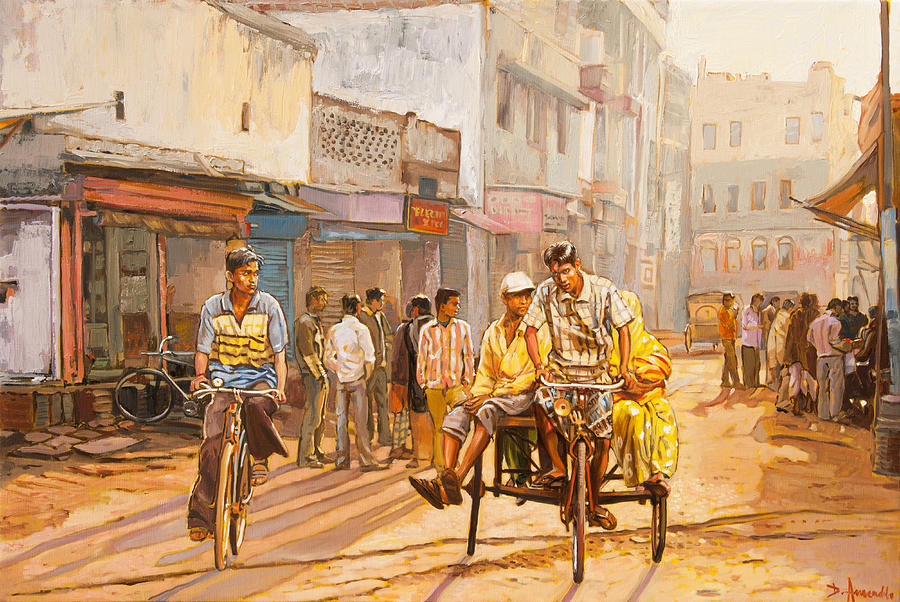 |
Gopal Mukhopadhyay Averted Disaster for Hindus
Had Suhrawardy’s game plan succeeded, it would have been disastrous for Bengali Hindus. Had Calcutta and its neighbouring districts gone to East Pakistan, lakhs of Bengali Hindus would have been rendered homeless. And Hindus, as experience has shown, would not have been safe in Muslim-majority East Pakistan (now Bangladesh).
Statistics prove this contention. Bengali Hindus have never been safe and have always faced discrimination, killings, rapes, forcible conversions and forced displacements in Muslim-majority East Bengal that went on to become East Pakistan and then Bangladesh. In 1901, Hindus formed 33 per cent of the population of the eastern part of Bengal. They dwindled to 31.5 per cent in 1911, 30.6 per cent in 1921, 29.4 per cent in 1931 and 28 per cent in 1941.
After 1947, the decline in the Hindu population in East Pakistan was sharp. Hindus got reduced to 22.05 per cent of the population of East Pakistan in 1951, to 18.5 per cent in 1961, 13.5 per cent in 1974 (after the creation of Bangladesh), 12.13 per cent in 1981, 10.51 per cent in 1991, 9.2 per cent in 2001 and 8.96 per cent in 2011. By 2031, Hindus will form barely 5 per cent of the population of Bangladesh.
This proves that Bengali Hindus would never have been safe in Muslim-majority East Pakistan that would have included Calcutta, Howrah, 24 Parganas and Hooghly had Suhrawardy’s pogrom against Hindus succeeded and had Gopal Mukhopadhyay not valiantly organised and fought back the murderous Islamist mobs inspired and led by Suhrawardy.
Gopal Refused To Gandhi’s Demand For Disarming
The genocide of Hindus and murderous riots spread from Calcutta to other parts of India and Bengal during and after the partition. Gopal Patha therefore did not dissolve his organisation in order to protect his Hindus from Islamist jihadis. In 1947 pacifist MK Gandhi was on a tour of Bengal asking Hindus to give up their arms. Many Hindu leaders succumbed to his ‘satyagraha’ blackmail tactics and disarmed themselves, but Gopal Patha refused to concede to Gandhi’s demands as they found his suggestions impractical.
Gopal told in an interview later, “Gandhi called me twice, I didn’t go. The third time, some local Congress leaders told me that I should at least deposit some of my arms. I went there. I saw people coming and depositing weapons which were of no use to anyone: out-of-order pistols, that sort of thing. Then Gandhi’s secretary said to me: ‘Gopal, why don’t you surrender your arms to Gandhiji?’ I replied, `With these arms, I saved the women of my area, I saved the people. I will not surrender them. Where was Gandhiji, I said, during the Great Calcutta Killing? Where was he then? Even if I’ve used a nail to kill someone, I won’t surrender even that nail.” Gandhi’s pacifism couldn’t win over a man who saved Calcutta’s millions of Hindus from being completely wiped out.
Will History Repeat Itself
Bengali Hindus would, thus, have been without a homeland today if Suhrawardy had succeeded. If Bengali Hindus are living in Kolkata today, and if (West) Bengal exists today, they have Gopal Mukhopadhyay (and other stalwarts, primary among them being Dr Syama Prasad Mookerjee) to thank for. Had it not been for them, Calcutta and major parts of present-day Bengal would have been part of East Pakistan and then Bangladesh, where Hindus are a persecuted lot living like miserable second-class citizens in penury and despair. Unfortunately, Bengali Hindus have forgotten their heroes to whom they owe their existence. They have forgotten their history. And that is why Bengal today faces the danger of Islamist forces trying to wrest political control of the state. Those who cannot remember the past, as nineteenth-century Spanish philosopher George Santayana had famously said, are bound to repeat it.
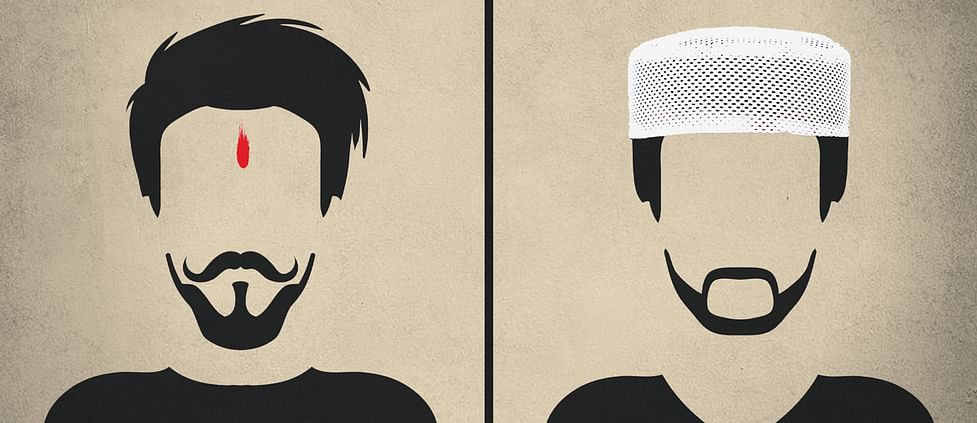 |
Gopal Patha The Forgotten Hero
Independent India raised on the canard that independence was won by pacifist means by Gandhi-Nehru duo, had no place for revolutionary leaders like Bhagat Singh, Rajguru, Sukhdev nor for Subash Chandra Bose. Stalwarts like Veer Savarkar are routinely demonised by the leftist historians, it was no wonder therefore to completely sweep under the carpet the very occurrence of the Great Calcutta Killings by Jinnah’s Direct Action Day Islamist Jihad.
So, the great saviour of Bengal and Calcutta, Gopal Chandra Mukhopadhyay was not only forgotten, but also sullied by leftist historians like Joya Chatterji, Professor of South-Asian History, University of Cambridge, as “a major dacoit” in an article in the Scroll. The article goes on to further denigrate the great man as a “syndicate ganglord with a finger in various pies such as real estate and gambling”.
Gopal Patha and his legendary history was commemorated by another doughty Hindu leader in his own right, Tapan Ghosh, fondly called Tapan Da, who through his organisation, Hindu Samhati, held yearly rallies in Calcutta drawing a crowd of 10,000 youths in 2017. Tapan Da raised awareness about the Great Calcutta Killing, the horrendous genocide of Hindus and Gopal Patha’s decisive role which changed the fate of Calcutta and Bengali Hindus.
Bengali Hindus and Calcutta has two main leaders to thank for their very existence, one Gopal Patha the other being Syama Prasad Mukherjee. There is a famous saying that people who don’t remember their history are bound to repeat it. West Bengal seems to be on the brink of repeating its history with rising Islamist jihad. In today’s West Bengal, Hindus are denied the permission to even immerse Durga idols in the Ganges, even the Bengali language has been cannibalised to suit Islamic tastes and merely chanting “Jai Shri Ram” would land you up in jail.
West Bengal today is crying for yet another Gopal Patha to save itself from becoming Greater Bangladesh!
References:
Jaydeep Mazumdar’s article in Swarajya
Images sourced from wikipedia
1946: The Great Calcutta Killings and Noakhali Genocide {A Historical Study) - Dinesh Chandra Sinha: Ashok Dasgupta (Mahamaya Press & Binding, Kolkata)
Taken from: Stern Reckoning (A Survey of the Events leading up to and following the Partition of India) – Gopal Das Khosla, Oxford University Press
Saffron Worldview' article in Kreately
Andrew Whitehead - Partition Voices - Gopal 'Patha' Mukherjee
aman krc's article in Hinduaawaj
 Support Us
Support Us
Satyagraha was born from the heart of our land, with an undying aim to unveil the true essence of Bharat. It seeks to illuminate the hidden tales of our valiant freedom fighters and the rich chronicles that haven't yet sung their complete melody in the mainstream.
While platforms like NDTV and 'The Wire' effortlessly garner funds under the banner of safeguarding democracy, we at Satyagraha walk a different path. Our strength and resonance come from you. In this journey to weave a stronger Bharat, every little contribution amplifies our voice. Let's come together, contribute as you can, and champion the true spirit of our nation.
 |  |  |
| ICICI Bank of Satyaagrah | Razorpay Bank of Satyaagrah | PayPal Bank of Satyaagrah - For International Payments |
If all above doesn't work, then try the LINK below:
Please share the article on other platforms
DISCLAIMER: The author is solely responsible for the views expressed in this article. The author carries the responsibility for citing and/or licensing of images utilized within the text. The website also frequently uses non-commercial images for representational purposes only in line with the article. We are not responsible for the authenticity of such images. If some images have a copyright issue, we request the person/entity to contact us at This email address is being protected from spambots. You need JavaScript enabled to view it. and we will take the necessary actions to resolve the issue.
Related Articles
- Prophecies of Jogendra Nath Mandal getting real after seventy years of his return from Pakistan
- Why Hindu-Sikh genocide of Mirpur in 1947 ignored? Why inhuman crimes of Radical Islamists always hidden in India?
- Moplah Genocide of the Malabar Hindus, 1921: Thousands of Hindus slaughtered
- The Islamic Doctrine of Permanent War: Jihãd and Religious Riot
- Calcutta Quran Petition: A petition to ban the Quran altogether was filed 36 years ago, even before Waseem Rizvi petitioned for removing 26 verses from Quran
- Direct Action Day triggers The Great Calcutta Killings: Kolkata Paid Its Lives To Create Pakistan
- Dhimmitude is nothing but a Stockholm Syndrome
- Twitter rewards an Islamist org, set to be banned by India, with a verified blue tick: Here is what PFI has done in the past
- If only India’s partition chilling wound was not enough, Gandhi did his last protest again only to blackmail India into giving 55 crores to Pakistan, dragged Hindu, Sikh refugees seeking shelter in mosques to die in cold: And we call him Mahatma, not for
- Tipu Sultan remembered as killer of Brahmins and demolisher of temples in many villages of Tamil Nadu: a freedom fighter or Islamic bigot?
- Here is a list of 20 incidents where the ‘Jai Shri Ram’ slogan has been misused to turn a random crime into ‘hate crime’
- Wikipedia dismisses Love Jihad as a conspiracy theory by Hindus, but claims reverse Love Jihad against Muslims is real
- Tragedy or Drama: Mufti Mohammad Sayeed's daughter Rubaiya abduction led to free five most notorious terrorists
- Speech of Sardar Patel at Calcutta Maidan in 1948 busts the myth of ‘Muslims chose India’ and is relevant even today
- Godse's speech and analysis of fanaticism of Gandhi: Hindus should never be angry against Muslims





















